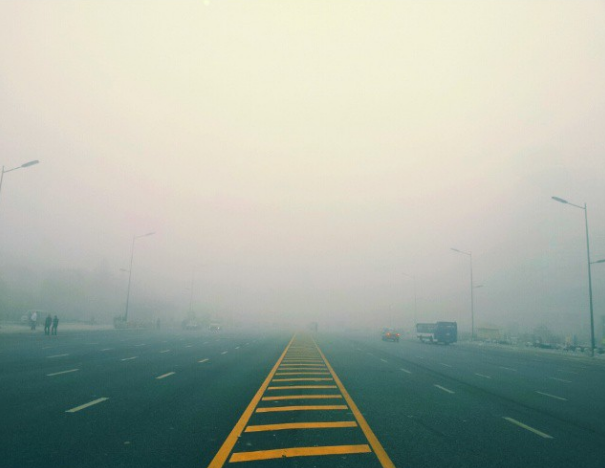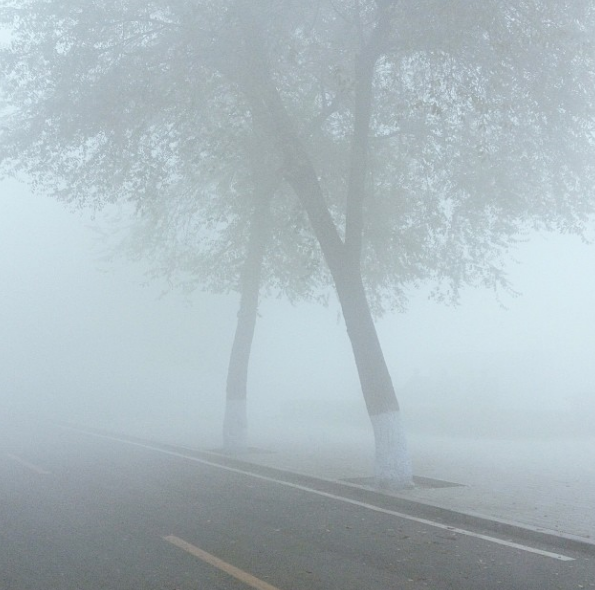
Image via Instagram
Harbin, the northeastern capital of Heilongjiang, China, has a population of approximately 11 million people. This morning, smog consumed the city, forcing its people to stay indoors due to the toxic air conditions. The lethal smog forced airports to close and schools to temporarily shut their doors. With an index measuring PM 2.5, Harbin experienced its first air pollution crisis of the season. In Harbin, the smog will supposedly remain for the next 24+ hours.
The Chinese cities, Tangshan and Changchun, also experienced similar levels of smog. Last year, Beijing went into a state of emergency when the PM2.5 raised above 900. Last week, Beijing announced its color-coded alert system to notify the public of air pollution. The notifications stopped factory work, construction, and other activities because the air was so hazardous.

Image via Instagram
In Harbin, residents took to Instagram to document the event, snapping photos of the sky, the empty streets, and the people around them. Each photo showed a ghastly Chinese landscape that almost resembled a post-apocalyptic world.
People in China are paying more attention to the recurring pollution problem, but so far the government has made no progress on its promised reform ofpollution policy.

Image via Instagram
Dutch designer, Daan Roosegaardee, had difficulty coping with smog during his stay in Beijing. He could barely see OMA's CCTV building that his room overlooked. In the shadowy light of severe pollution, Roosegaarde was inspired to create an electronic vacuum cleaner that cleans the smog in the sky. Roosegaardee is working with the mayor of China to test his device.
The electronic vacuum cleaner implements buried copper coils to create an electrostatic field. The field attracts smog particles and allows a layer of clean air to form above it. The coils can be camouflaged under city streets and grass and do not harm the environment. In an interview with Deezen Magazine, Roosegaardee explained how this concept is comparable to statically charged balloons that make your hair stand on end. “If you apply that to smog, to create fields of static electricity of ions, which literally attract or magnetize the smog so it drops down so you can clean it, like an electronic vacuum cleaner,” he explains.

Image via Deezen
In late September, Electronic Products reported how the World Energy Council studied 129 nations from around the world, analyzing the countries based on energy management, resource efficiency, and overall sustainability. The top 10 included various countries of the European Union, Canada, and New Zealand. The World Energy Council also graded each country with a letter to signify their performance in the categories of management, security of energy supply, accessibility / affordability of energy to the country’s population, and how much power is used from low-carbon renewables.
Although China ranked an A in the energy security sector, the country scored all D’s for how it interacts with the environment and how accessible / affordable its energy resources are to the citizens.
Perhaps the Chinese government will take this study seriously begin the process of ameliorating their system of energy protection to become a more sustainable country.
If Roosegaardee’s invention is a success, then smog would no longer be a problem for polluted cities like Harbon and Beijing. Clean air equates to healthier people and a more “green” and breathable environment.
Story via: Business Insider, Worldenergy.org, Electronic Products, psfk.com, Deezen
Advertisement
Learn more about Electronic Products Magazine





